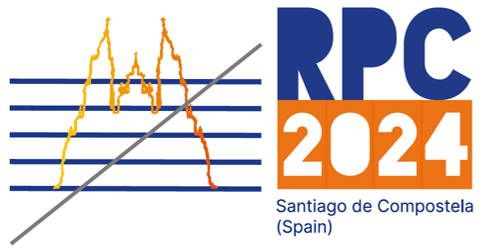Speaker
Description
The resistive well (R-WELL) and the resistive plate well (RP-WELL) are resistive-protected gaseous detectors, capable of operation in a harsh accelerator environment in discharge-free mode. Among current room-temperature applications are digital hadron calorimetry and muon tomography. These detectors also present a potential solution for operation in cryogenic conditions, with adequate resistive materials. We hereby present the characterization results of two resistivity-tunable materials, namely DLC (diamond-like carbon) film coatings and Fe2O3/YSZ (iron oxide + Yttria-stabilized zirconia) plates, suitable for operation at LXe and LAr temperatures. Operation at LXe temperature (163 K) demonstrated stable operation at gains well above 10^5, with soft x-rays. Measurements in Ar vapor near LAr temperature (90 K) provided stable avalanche gain with the protected structures, up to 5-fold larger than with thick GEM (THGEM) - opening potential prospects for operation of dual-phase time projection chambers at lower energy thresholds.
In this work we will discuss in detail the characteristics of this first-generation of cryogenic resistive materials, capable of discharge quenching in gaseous detectors down to LAr temperature. Additionally, it will be shown how they can be tailored to room-temperature operation, yet with resistivities in the range of 10-10^4 MΩ /sq (resistive coatings) and 10^9 - 10^12 Ω·cm (resistive plates), compatible a priori with RPC-based detectors.

